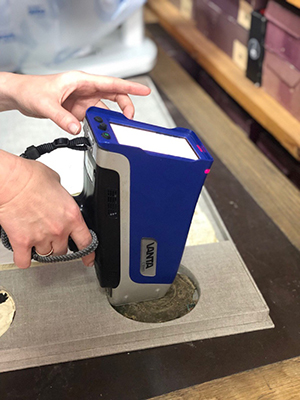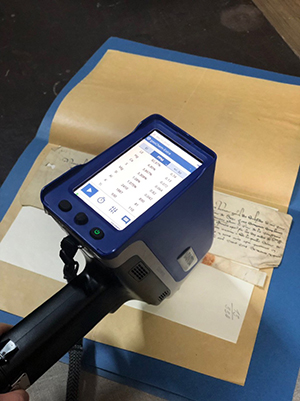Historic documents can be fragile and must be treated gently. To study the documents' ink or paper composition, historians use nondestructive testing techniques such as X-ray fluorescence (XRF). XRF provides material chemistry results, helping researchers understand what the documents, especially the ink, are made of. XRF is also a fast technique, so researchers can scan a large area quickly.
Historians from the St. Petersburg Institute of History and the Russian Academy of Sciences used a Vanta™ handheld XRF analyzer to shed new light on their study of ancient manuscripts.
The Age of Ancient Ink
The composition of the documents’ ink and stamps can provide clues to its age. As pigment technology changed through the years, different substances were used to make the ink. By testing the ink’s material chemistry, it’s possible to figure out what the ink was made of and, consequently, when it was likely produced.
The composition of the ink pigment can differ depending on the place of origin and method of manufacture. For example, cinnabar (HgS) was used to give red color to wax seals or ink. In the 14th century, artificial cinnabar became more common. The manufacturing process for artificial cinnabar uses potassium, so the presence of potassium with the cinnabar indicates a more recent document. In addition, cinnabar was expensive and was often replaced by cheaper pigments like minium (an oxide of lead) or iron oxide, even in historical texts. Identifying these cheaper pigments in a document helps researchers when determining the age and quality of a historical document.

Testing a wax seal with a Vanta analyzerUncovering Hidden Text
Another interesting application is using XRF to help identify text that had been erased or rewritten. Before XRF, researchers would have to painstakingly scan entire texts to look for areas of erased text. Using handheld XRF enables them to identify probable areas of erased text that they can focus on. When a document is written on or stamped, the ink, which may contain elements like iron, mercury, or lead, penetrates deeply into the parchment. When the text is erased, these elements remain behind, even after the text is no longer visible. Handheld XRF analyzers enable researchers to quickly scan documents for these elements to locate areas where there is hidden text. Once the areas are identified, slower, more detailed lab techniques are used to retrieve the text that was previously hidden.

Searching for hidden text in a document
Related Content
How XRF Illuminates the Analysis of Ancient Ceramics
Decoration for the Dead: Using XRF to Test Pigment Color on Ancient Egyptian Sarcophagi

